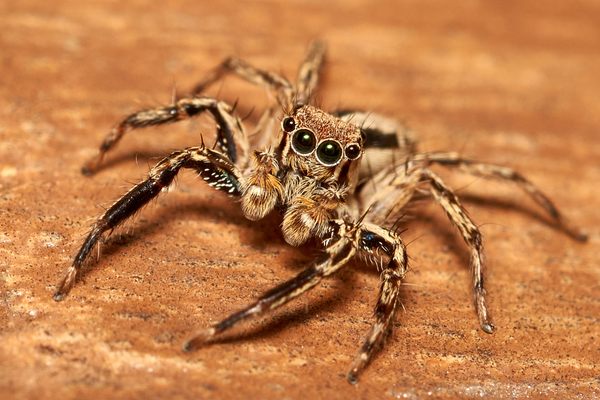Wonder Is Everywhere: The Cosmic Dust Curator, a Secret Ancient Forest, and More From Around the Web
Get a peek into what we’re obsessed with right now.
Wonder is everywhere. That’s why, every other week, Atlas Obscura drags you down some of the rabbit holes we encounter as we search for our unusual stories. We highlight surprising finds, great writing, and inspiring stories from some of our favorite publications.

The Online Art Catalogue Chronicling Stolen African Heritage
by Gouri Sharma, MIT Technology Review
The artifacts of the Edo people looted by the British in the late 19th century—often known as the Benin Bronzes—are now scattered across museums and private collections. The website Digital Benin brings these important objects back together—at least virtually. Creators call this information-gathering effort “digital restitution;” The site reattaches traditional Edo names and other culturally specific knowledge to the artifacts, and they hope it is a step in securing the return of the items to the Edo community, many of whom live in southern Nigeria.
An Interview With NASA’s Cosmic Dust Curator
by Katherine Harmon Courage, Nautilus
Marc Fries, who holds the amazing title of “cosmic dust curator” for NASA, has scoured the Earth and its atmosphere—from Arizona to Antarctica—to find meteorites and, he now believes, tiny pieces of human-made space vehicles.
The Sound Maps that Predict Poachers’ Movements
by Julián Reingold, BBC Future
In the Upper Paraná Atlantic Forest on the border of Argentina and Brazil, scientists are employing technology to protect the 300 jaguars and other animals under threat from deforestation and poaching. Among their tools: sound recordings. Acoustic sensors can detect gunshots, helping scientists refine maps of the most dangerous regions of the vast forest.

The Return of Flag No. 98
by Michael Wilson, The New York Times
In 1939, the Explorers Club—a storied institution among adventures—gave Admiral Richard E. Byrd a flag bearing the club’s symbol to carry on his expedition to Antarctica. He was supposed to bring the flag back to the Explorers Club, but when he and his team returned to prepare for the coming war, it was missing. Its whereabouts were unknown for more than 80 years.
Petrified Mangrove Forest Discovered Hiding in Plain Sight
by Sascha Pare, LiveScience
The tropical forests of Barro Colorado Island, which sits in Panama’s human-made Gatun Lake, is one of the most studied ecosystems in the world. But scientists have discovered something they never spotted before: the petrified remains of a 23-million-year-old forest of mangroves, buried by a volcanic eruption in the early Miocene.

Who Was the Mysterious Woman Buried Alone at the Pet Cemetery?
by Andrew Keh, The New York Times
Hartsdale Pet Cemetery—the first of its kind in the United States—is home to the remains of about 80,000 beloved pets and about 900 of their humans. But it was a mystery why Patricia Chaarte, a 92-year-old woman who had died at her home in Mexico, asked to be interred at the cemetery just north of New York City.
Instagram-Famous Boat May Be Scraped
by Associated Press
A dilapidated fishing boat on a sandbar in Inverness, California, that became an Instagram sensation, is again in danger of being removed. The boat, known as the Tomales Bay Shipwreck, the Inverness Shipwreck, and S.S. Point Reyes, was once saved from destruction from the outpouring of support from photographers, but recent storms have created unsafe conditions, the National Park Service says.


































Follow us on Twitter to get the latest on the world's hidden wonders.
Like us on Facebook to get the latest on the world's hidden wonders.
Follow us on Twitter Like us on Facebook